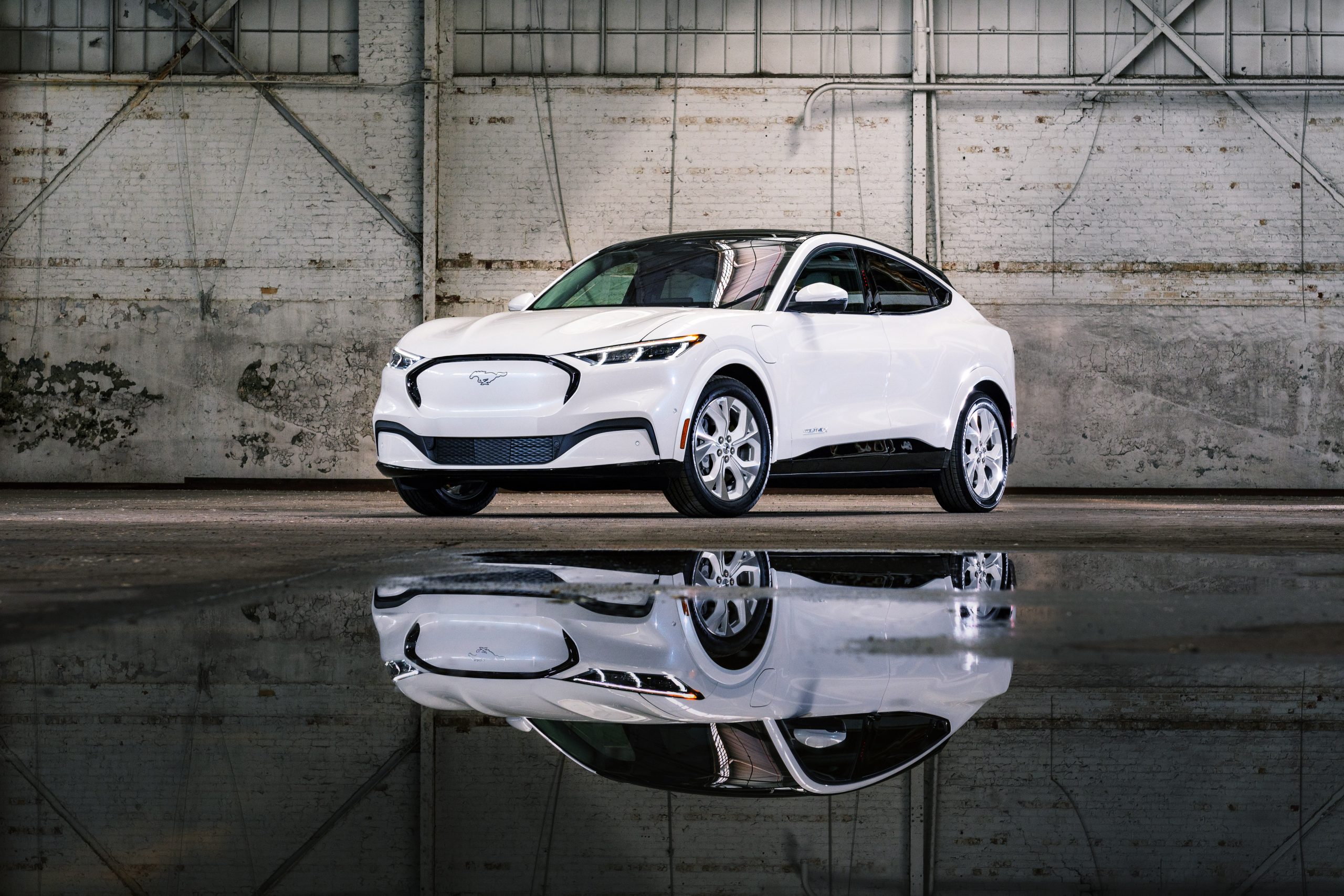Automotive chemical manufacturer Prestone is currently developing a low-conductivity electric vehicle (EV) coolant that scientists hope can increase EV efficiency.
While ethylene glycol is used in both gas vehicles and EVs, including Teslas, Prestone has increased its research and development budget for learning about less conductive cooling fluids over the past year, as detailed in a report from Automotive News on Friday. Prestone EV Director Tom Corrigan says that that won’t be the case in the future, as the company seeks to develop its own.
“Essentially, EVs are borrowing the internal combustion engine fluid,” Corrigan said. “We are going to see a shift in that in the next one to two years.”
The company has been testing its low-conductivity EV coolants in Ford Mustang Mach-E vehicles at its tech center in Danbury, Connecticut, in recent months. While initial offerings are roughly two years away and will still include ethylene glycol bases, Corrigan also says that petroleum-based dielectric coolants could replace the chemistry in future years.
Coolant types may also be dependent on battery chemistries, with lithium-iron phosphate (LFP), solid-state, and nickel manganese cobalt batteries likely all requiring different coolant makeups. Tesla writes on its website that its cooling systems currently use a phosphate and nitrate-free ethylene glycol-based coolant.
Ethylene glycol can ionize over time when it interacts with metals, plastics, and other necessary engine materials. As the coolant gains electrons, the overall efficiency of a battery-electric vehicle (BEV) is decreased. In addition, the coolant chemistry is expected to shift because of safety, as a BEV-friendly replacement for the corrosion inhibitors used in ICE coolants.
“Those ionize in the fluid and carry an electrical charge. If you have an issue where high-conductivity coolant contacts high-voltage electronics or the battery, it can lead to fire,” Corrigan explains. “So what we are working on is low-conductivity coolant.”
Scientists evaluate the electrical conductivity of coolants using a unit called microsiemens, which measures the conductivity per centimeter. In gas cars, experts expect to see between 3,000 and 5,000 microsiemens per centimeter, considered highly conductive, though it doesn’t negatively interact with gas vehicles in the same way it does for BEVs.
Instead, BEV makers are asking Prestone to develop a coolant with just 100 microsiemens per centimeter, while other fuel cell vehicles may require coolant conductivity levels of just 0.5 to 1.5 microsiemens, according to Corrigan.
“Every bit of increased conductivity is a loss of efficiency in the fuel cell. You’ve got to make the fluid very pure,” he notes.
Along with adding to the company’s R&D budget, Prestone added an additional five scientists and engineers in the department developing coolants for BEVs and fuel cells.
“We see where the future is going with EV coolants, and we want to be ready when the manufacturers are ready,” Corrigan says.
RELATED:
StoreDot closes in on U.S. market entry with launch of R&D campus in California
What are your thoughts? Let me know at zach@teslarati.com, find me on X at @zacharyvisconti, or send us tips at tips@teslarati.com.


ivermectin 3mg for people – ivermectin for humans for sale how to buy carbamazepine
accutane 10mg tablet – buy isotretinoin 40mg online zyvox 600mg drug
buy generic amoxicillin online – order valsartan online cheap combivent 100 mcg ca
azithromycin 250mg drug – order generic bystolic 20mg purchase nebivolol for sale
order prednisolone 10mg generic – prednisolone 5mg pills purchase prometrium online
order gabapentin 800mg for sale – order clomipramine generic sporanox drug
augmentin 625mg for sale – duloxetine us cymbalta 40mg sale
buy augmentin tablets – buy ketoconazole sale order cymbalta sale
buy semaglutide 14 mg without prescription – rybelsus 14mg generic buy periactin 4mg online cheap
buy tizanidine 2mg pills – buy plaquenil 200mg without prescription buy microzide 25 mg pill
What a great read! Your perspective on this subject is unique and I appreciate that. Keep up the excellent work!
tadalafil 10mg usa – order generic viagra 50mg canadian viagra online pharmacy
cenforce 50mg pill – cenforce for sale order glycomet online
buy omeprazole 10mg pill – buy tenormin 100mg for sale atenolol without prescription
methylprednisolone 8 mg online – order lyrica generic order aristocort pill
purchase clarinex – buy priligy 60mg for sale dapoxetine 60mg sale
purchase zovirax for sale – buy acyclovir 800mg online buy crestor pills for sale
order domperidone 10mg pill – buy cyclobenzaprine 15mg pills generic cyclobenzaprine
motilium pills – domperidone 10mg cost purchase flexeril without prescription
oral inderal – buy methotrexate tablets buy methotrexate 2.5mg generic
coumadin 2mg usa – buy reglan 20mg losartan where to buy
order levaquin without prescription – zantac for sale ranitidine price
buy generic nexium – nexium 20mg price sumatriptan pills
order meloxicam generic – celebrex 200mg uk buy tamsulosin 0.4mg pill